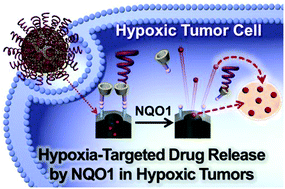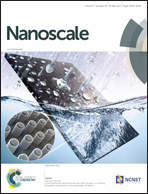Mesoporous nanocarriers with a stimulus-responsive cyclodextrin gatekeeper for targeting tumor hypoxia†
Abstract
Tissue hypoxia developed in most malignant tumors makes a significant difference to normal tissues in the reduction potential and the activity of various bioreductive enzymes. Given the superior enzymatic activity of NAD(P)H:quinone oxidoreductase 1 (NQO1, a cytosolic reductase up-regulated in many human cancers) in hypoxia relative to that in normoxia, NQO1 has great potential for targeting hypoxic tumor cells. In the present report, the core concept of hypoxic NQO1-responsive mesoporous silica nanoparticles (MSNs) is based on the reasoning that the superior enzymatic activity of NQO1 within hypoxic cancer cells can be utilized as a key stimulus for the selective cleavage of an azobenzene stalk triggering the on–off gatekeeping for controlled release of guest drugs. We corroborate that the NQO1 specifically triggers to release the entrapped drug in the nanochannel of MSNs by reductive cleavage of the azobenzene linker only under hypoxic conditions in a controlled manner not only in vitro but also in vivo. Therefore, our results indicate that Si-Azo-CD-PEG could be utilized as a hypoxic cancer-targeting drug delivery carrier, and further suggest that the azobenzene linker could generally be useful for the construction of hypoxic NQO1-responsive nanomaterials.



 Please wait while we load your content...
Please wait while we load your content...